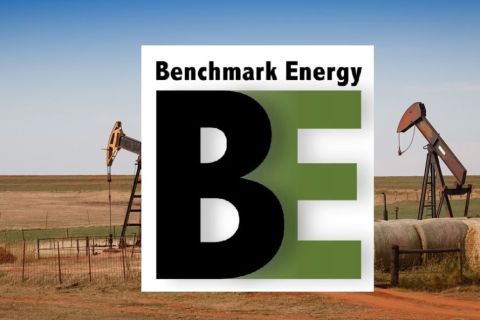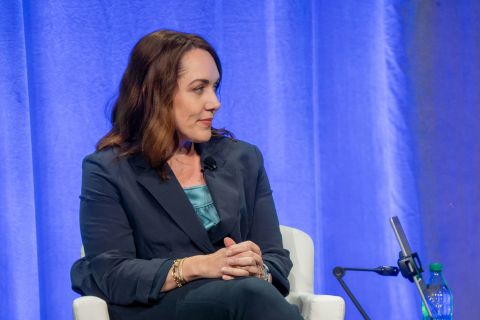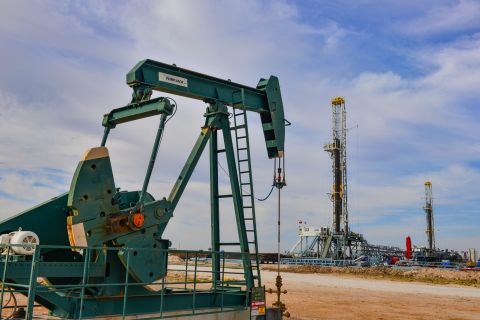By Jennifer Postel, Assistant Editor
The North American shale revolution has triggered an uptick in environmental rules and regulations, bringing to light an unprecedented number of regulatory issues.
“I think the industry is confident in investing in new infrastructure,” Jerry Fiore, practice director of environmental services at CH2M HILL, tells Midstream Business. “But there are still a lot of regulatory unknowns.”

These regulatory unknowns have those in the midstream facing a host of key challenges, including the length of the permitting process, risks to project schedules and costs and the disparities, inconsistencies and complexities of compliance. And, despite the best intentions, the regulatory world can often be unfamiliar territory for the midstream, causing the industry to reach out to the environmental-services sector to help them overcome those challenges by developing a balance between safety, reliability and environmental compliance.
“There is a critical path that you need to develop when you are putting together the permitting plan,” Fiore says. “That plan helps a midstream company develop the information they need to meet that critical path and that helps them get through the permitting in a timely manner.”
Developing that balance between the two worlds helped position the Colorado-based CH2M HILL as No. 1 on Engineering News-Record.com’s (ENR) Top 200 Environmental Firms list. ENR.com’s rankings are based on revenue. According to the website in 2012, revenues for environmental service providers were up 5% to $54.1 billion and exceeded non-U.S. work and private-sector activity by more than 20%.
“The experience of our staff and the relationships that they have developed with the clients and the agencies helps us navigate the conflicts between regulatory requirements and the realities of getting the project developed.” Fiore says. “I would say that most of the rules are fairly prescriptive, and we can work through them very effectively. But, from the development of the project to the construction phase, it is critical for companies to understand that early investment in designing the project is key to meeting a project’s schedule.”
Change of course
The explosion of gas and oil production has caused tremendous change throughout the industry including in the area of regulatory compliance, says Greg Rizzo, president and chief executive at Spectra Energy Partners, a North American natural gas infrastructure company.
“Thirty years ago you got a FERC [Federal Energy Regulatory Commission] certificate and that was it. You didn’t have to go through the pre-filing process, and you didn’t spend any money,” he told attendees at the Southern Gas Association (SGA) Technical Conference on Environmental Permitting and Construction in February. “Nowadays by the time you do the scoping meetings, go through the source reports and the pre-reporting, you might be millions of dollars into the project already.
“Projects have become more dynamic and risky. They are more time consuming, more expensive, have more up-front dollars and more at-risk dollars. How this process has changed is just amazing, it is a lot more costly and a lot more complex.”
And, according to Rizzo, environmental compliance and solution companies are “desperately needed by all of our companies to successfully execute all of these projects.”
Currently, companies must weave through a variety of federal, state and local regulatory agencies from the Environmental Protection Agency (EPA) to the FERC, from the Army Corps of Engineers all the way down to local municipalities. Pipeline companies are also challenged to work within a number of federal laws including the Clean Air Act, the Endangered Species Act, the Fish and Wildlife Coordination Act, the National Historic Preservation Act and the Clean Water Act. And, in 2008, a simple change to the rules and regulations now has companies needing to think ahead when it comes to ecological offsets and mitigation of impacts to wetlands and streams.
“Before, we would submit a permit application with just a plan for mitigation; no more can you do that,” Elliott Bouillion, chief executive at Resource Environmental Solutions (RES), tells Midstream Business. “That was a watershed moment for us; it really pushed us to work early with the client.”
Out in front
Regulatory compliance is ever-changing and engaging a company early is an important specialty of Houston-based RES. “Clients benefit from being able to plan ahead,” Bouillion says, “because knowing the scope and magnitude of the impacts enables budgetary planning, brings predictability to their projects and reduces future risks.
“There are some great companies that are working ahead and those projects have a better chance of going smoothly. Understanding the ecological impacts and understanding the preferences of regulators beforehand helps everybody.”
A growing business, RES and its chief executive, Bouillion, have spent the past six years aiding clients as they make their way through the permitting process, focusing much of their attention on wetland- and stream-permitting and mitigation. With more than 100 energy clients in both E&P and midstream, RES works hand- in-hand with companies and their consultants. It helps assess a project and its possible environmental impacts, while helping determine the necessary ecological offsets, which are used to replace environmental functions and values lost through project development.
“We do a scientific assessment of that ecological environment. It helps the consultant get ready to delineate that route. We do those estimates very early, and we hand them over to both the consultant and the client permittee,” Bouillion says. “In the past, people would delineate first and discover problems later, which would often cause issues. It’s a cost issue and could delay construction. You have financed the pipeline; you need to hit the dates.
Bouillion says that by working early enough, his company can prepare clients to meet effectively with regulators, which is key.
“We have laws, we have rules and regulations, and we have to be compliant,” he tells Midstream Business. “If not, we are forced to address after-the-fact permitting and regulatory enforcement.”
RES and its counterpart-consulting firms place much stock in working within compliance and being good stewards of the industry. The energy and environmental culture, Bouillion says, is about working together and cooperating as one, to do the best job possible.
“It is not adversarial,” he says. “We want to understand.”
Streamlining the process, working within regulations and cooperating to the fullest extent helps regulators gain confidence in a midstream company, which, in turn, builds confidence for a company’s capital investors, Bouillion says.
“For a pipeline company to have predictability is a tremendous asset,” he says, “It builds confidence with both the investors and the regulators.”
Looking ahead
And, like many others working with the midstream, the outlook remains optimistic, says CH2M Hill’s Fiore.
“The midstream business helps so many other industries; it is not just a one- to-one effect,” he tells Midstream Business. “They are producing more oil, which helps us become more energy independent, which keeps our prices down, which keeps fuel costs down, which will help keep food prices down. It has a far-reaching effect.”
But to keep this effect a positive one it becomes imperative that those in the midstream plan early, engage their consultants and allow them to help. Clear communication and understanding the complexities and ramifications of compliance strategies benefits not only the companies but the world around them, a point that Spectra’s Rizzo drove home during the SGA conference.
“The real solution is for us to concentrate on what we do and what we always do; we have to focus on the safety and reliability of our pipeline,” he said. “We have to focus on being good environmental stewards and have good environmental compliance. Pipeline safety is preemptive, and it is a commitment that we make and should strive to uphold.” END
Jennifer Postel can be reached at jpostel@hartenergy.com or 713-260-5205.
Recommended Reading
EIA: Permian, Bakken Associated Gas Growth Pressures NatGas Producers
2024-04-18 - Near-record associated gas volumes from U.S. oil basins continue to put pressure on dry gas producers, which are curtailing output and cutting rigs.
Benchmark Closes Anadarko Deal, Hunts for More M&A
2024-04-17 - Benchmark Energy II closed a $145 million acquisition of western Anadarko Basin assets—and the company is hunting for more low-decline, mature assets to acquire.
‘Monster’ Gas: Aethon’s 16,000-foot Dive in Haynesville West
2024-04-09 - Aethon Energy’s COO described challenges in the far western Haynesville stepout, while other operators opened their books on the latest in the legacy Haynesville at Hart Energy’s DUG GAS+ Conference and Expo in Shreveport, Louisiana.
Mighty Midland Still Beckons Dealmakers
2024-04-05 - The Midland Basin is the center of U.S. oil drilling activity. But only those with the biggest balance sheets can afford to buy in the basin's core, following a historic consolidation trend.




